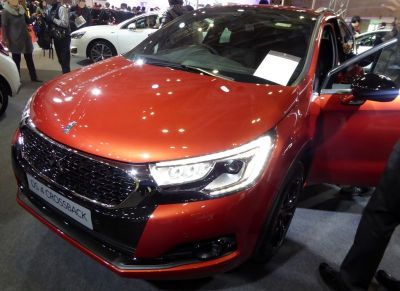 2013 Peugeot 3008 I (Phase II, 2013) Dimensions, Size & Specs
2013 Peugeot 3008 I (Phase II, 2013) Dimensions, Size & Specs
Measurements of the 2013 Peugeot 3008 I, engineered for optimal performance and comfort
| Dimensions | |
|---|---|
| Length: | 4365 mm171.9 in14.3 ft |
| Width: | 1837 mm72.3 in6.0 ft |
| Width (Folded Mirrors): | 1910 mm75.2 in6.3 ft |
| Width (Opened Mirrors): | 2113 mm83.2 in6.9 ft |
| Height: | 1604-1639 mm63.1-64.5 in5.3-5.4 ft |
| Trunk Capacity: | 420-512 liter14.8-18.1 cu ft |
| Trunk Capacity (Max): | 555-1604 liter19.6-56.6 cu ft |
| Weight Specifications | |
| Curb Weight: | 1399-1660 kg3084-3660 lbs |
| Maximal permitted Weight: | 1950-2245 kg4299-4949 lbs |
| Roof Load: | 75 kg165 lbs |
| Tire Specifications | |
| Rims Sizes: | 17-inch rims:
|
| Tire Sizes: |
|
The Peugeot 3008 I (Phase II) represents the refreshed version of the first-generation 3008 compact SUV produced from 2013 to 2016. This model serves as a versatile crossover combining practical dimensions, stylish design, and efficient space utilization, making it a popular choice among urban and suburban drivers.
Dimensionally, the 3008 I Phase II measures 4,365 mm (171.9 inches) in length, with a width of 1,837 mm (72.3 inches) excluding mirrors. When folded, the side mirrors reduce width to 1,910 mm (75.2 inches), while fully opened mirrors stretch out to 2,113 mm (83.2 inches), influencing parking and maneuverability considerations. Its height ranges from 1,604 mm to 1,639 mm (63.1 to 64.5 inches), which offers a raised driving position common to SUVs and enhances road visibility.
The curb weight varies between 1,399 kg and 1,660 kg (3,083 to 3,660 lbs), depending on applicable configurations and options. The maximum permissible weight extends from 1,950 kg to 2,245 kg (4,299 to 4,951 lbs), reflecting its payload and towing capabilities within its vehicle class.
One of the highlights of the Peugeot 3008 I Phase II is its adaptable cargo capacity. The luggage space ranges from a practical 420 liters (14.8 cubic feet) with rear seats up, expanding to a flexible 512 liters (18.1 cubic feet) depending on interior configuration. Folding the rear seats unlocks a substantial cargo area between 555 liters (19.6 cubic feet) and a maximum of 1,604 liters (56.6 cubic feet), suitable for transporting larger items or luggage for long trips.
The vehicle supports a roof load up to 75 kg (165 lbs), enhancing its utility for carrying roof boxes or sports equipment such as bicycles and skis.
Wheels come in multiple sizes, including 17- and 18-inch rims (7.5J x 17,16), with tire options like 225/50 R17, 235/45 R18, and 215/60 R16, all supporting a balance of comfort and grip ideal for diverse driving conditions.
In summary, the Peugeot 3008 I (Phase II, 2013) stands out as a well-proportioned compact SUV with impressive versatility and cargo flexibility. Its measured size suits city driving while providing enough interior volume for families and adventurers alike, continuing Peugeot's commitment to combining functionality with modern design in the mid-size SUV segment.
Discover the standout features that make the 2013 Peugeot 3008 I a leader in its class
Have a question? Please check our knowledgebase first.
The Peugeot 3008 I (Phase II, 2013) measures 4365 mm (171.9 inches) in length, giving it a moderately compact footprint suitable for urban and suburban driving. Its width without mirrors is 1837 mm (72.3 inches), while with folded mirrors it slightly increases to 1910 mm (75.2 inches), and with mirrors fully opened the width reaches 2113 mm (83.2 inches). The height ranges between 1604 mm (63.1 inches) and 1639 mm (64.5 inches), depending on specific model trims and suspension settings. These dimensions make the 3008 an accessible SUV size, balancing interior spaciousness with manageable exterior proportions.
The curb weight of the Peugeot 3008 I Phase II ranges from approximately 1399 kg to 1660 kg (3085 to 3661 pounds), depending on the variant and optional equipment. This weight reflects the vehicle as delivered with standard fuel, fluids, and equipment. The maximum permissible weight, which includes passengers and cargo, varies between 1950 kg and 2245 kg (4299 to 4951 pounds). This range ensures the 3008 can carry a reasonable amount of load with safety and stability, critical for its function as a family SUV.
The luggage capacity of the Peugeot 3008 I Phase II is notably versatile. With rear seats upright, the cargo volume ranges between 420 and 512 liters (14.8 to 18.1 cubic feet), which fits most everyday luggage needs comfortably. When the rear seats are folded down, the load capacity expands significantly, ranging from 555 liters (19.6 cubic feet) to a maximum of 1604 liters (56.6 cubic feet). This flexibility allows users to accommodate larger items or increased volume for trips, making the 3008 practical for family outings or transporting bulkier goods.
The Peugeot 3008 I Phase II is equipped with rim sizes of 17 and 18 inches, specifically 7.5J x 17 and 7.5J x 18 rims depending on the trim and packages. The tire sizes vary accordingly, including 225/50 R17, 235/45 R18, and 215/60 R16 options. These dimensions are optimized to balance grip, ride comfort, and fuel efficiency. The larger 18-inch wheels tend to enhance handling and aesthetics but may slightly reduce ride softness compared to smaller wheels.
The Peugeot 3008 I Phase II has dimensions that generally allow it to fit into a standard residential garage. With a length of 4365 mm (171.9 inches) and width just under 2 meters including folded mirrors (1910 mm or 75.2 inches), it should fit comfortably in average garage spaces typically designed for passenger cars. However, the height of up to 1639 mm (64.5 inches) and opened mirror width of 2113 mm (83.2 inches) may require that mirrors be folded in to fit well and to avoid scraped edges. Overall, for most standard garages with dimensions approximately 6 meters in depth and 2.4 meters in width, the 3008 Phase II fits without issue.
The 1604 mm to 1639 mm height of the Peugeot 3008 I Phase II provides a higher seating position typical of SUVs, which enhances driver visibility and road presence compared to sedans or hatchbacks. This vertical space contributes to a comfortable cabin headroom for both front and rear passengers. In terms of garage clearance, this height remains moderate and fits within the clearance limits of most residential garages, which often exceed 2 meters in door height. The slightly varying height can depend on suspension setups or roof rack options, but overall, this range makes the vehicle versatile for urban, suburban, and light off-road environments.
The Peugeot 3008 I Phase II (2013-2016) is an update over the Phase I (2009-2013) model with subtle dimensional changes. The Phase II maintains a similar length of approximately 4365 mm (171.9 inches), which is nearly identical to the Phase I, ensuring continuity in compact SUV proportions. However, the Phase II often features slight refinements in width and height with the Phase II typically a bit wider due to updated styling and safety features, and the height range of 1604 to 1639 mm is comparable or slightly taller than the Phase I. These dimensional updates enhanced interior space and road presence without compromising maneuverability that buyers appreciated in the original generation.
Compared to other compact SUVs in the 2013-2016 segment, such as the Nissan Qashqai, Ford Kuga, and Volkswagen Tiguan, the Peugeot 3008 I Phase II offers competitive dimensions. Its length of 4365 mm (171.9 inches) places it in the mid-range size tier—slightly shorter than some competitors like the Tiguan but comparable or marginally larger than the Qashqai. The width with folded mirrors (1910 mm or 75.2 inches) and the interior packaging translate to practical passenger and cargo space, competing well on luggage capacity which ranges up to 1604 liters (56.6 cubic feet) when rear seats are folded, exceeding many rivals. Weight and ride height align closely with this class, positioning the 3008 as a well-balanced choice between comfort, interior space, and agility.
The Peugeot 3008 I Phase II has a roof load capacity of 75 kg (approximately 165 pounds). This figure is important for safely attaching roof racks, carrying cargo boxes, bike racks, or other external equipment. Staying within this limit ensures that the vehicle's roof structure is not overstressed and maintains driving stability, especially at higher speeds or in windy conditions. This roof load capacity is typical for compact SUVs of this era, allowing enough flexibility for outdoor and family activities without compromising safety.
The typical tire sizes for the Peugeot 3008 I Phase II are 225/50 R17, 235/45 R18, and 215/60 R16. These tire dimensions reflect a balance between comfort, grip, and fuel efficiency. Larger tires, such as the 18-inch 235/45, generally provide enhanced road handling and sharper steering response, contributing to a sportier drive feel. However, they may offer slightly firmer ride comfort and increased rolling resistance. On the other hand, the smaller 16-inch 215/60 tires give a softer ride, better cushioning over bumps, and usually lower road noise. Consumers can pick tire sizes based on preferences for ride quality, aesthetics, or performance.
Discover similar sized cars.

| Production: | 2023-present |
|---|---|
| Model Year: | 2023 |
| Length: | 4304 mm169.4 in |
| Width: | 1987 mm78.2 in |
| Height: | 1550 mm61.0 in |

| Production: | 2015-present |
|---|---|
| Model Year: | 2015 |
| Length: | 4420 mm174.0 in |
| Width: | 1910 mm75.2 in |
| Height: | 1630 mm64.2 in |

| Production: | 2016-2020 |
|---|---|
| Model Year: | 2016 |
| Length: | 4363 mm171.8 in |
| Width: | 2078 mm81.8 in |
| Height: | 1601-1625 mm63.0-64.0 in |

| Model Year: | 2024 |
|---|---|
| Length: | 4350-4384 mm171.3-172.6 in |
| Width: | 1826 mm71.9 in |
| Height: | 1575-1610 mm62.0-63.4 in |

| Production: | 2020-2023 |
|---|---|
| Model Year: | 2021 |
| Length: | 4297 mm169.2 in |
| Width: | 2001 mm78.8 in |
| Height: | 1559 mm61.4 in |

| Production: | 2017-2020 |
|---|---|
| Model Year: | 2017 |
| Length: | 4299 mm169.3 in |
| Width: | 2005 mm78.9 in |
| Height: | 1559 mm61.4 in |

| Production: | 2015-2018 |
|---|---|
| Model Year: | 2015 |
| Length: | 4284 mm168.7 in |
| Width: | 2052 mm80.8 in |
| Height: | 1529 mm60.2 in |
